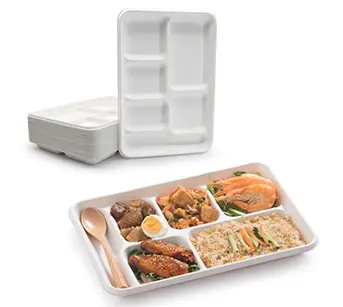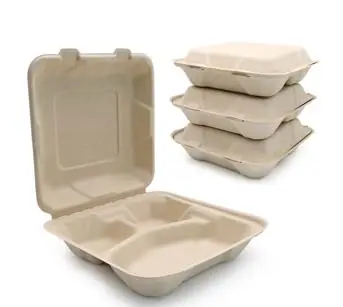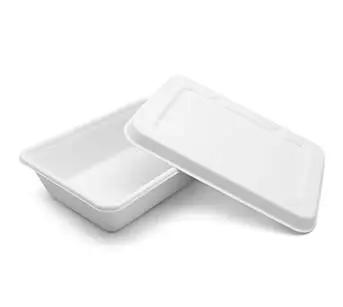Table of Content
[Hide]
The Rise of Disposable Takeaway Plates: Redefining Convenience and Sustainability
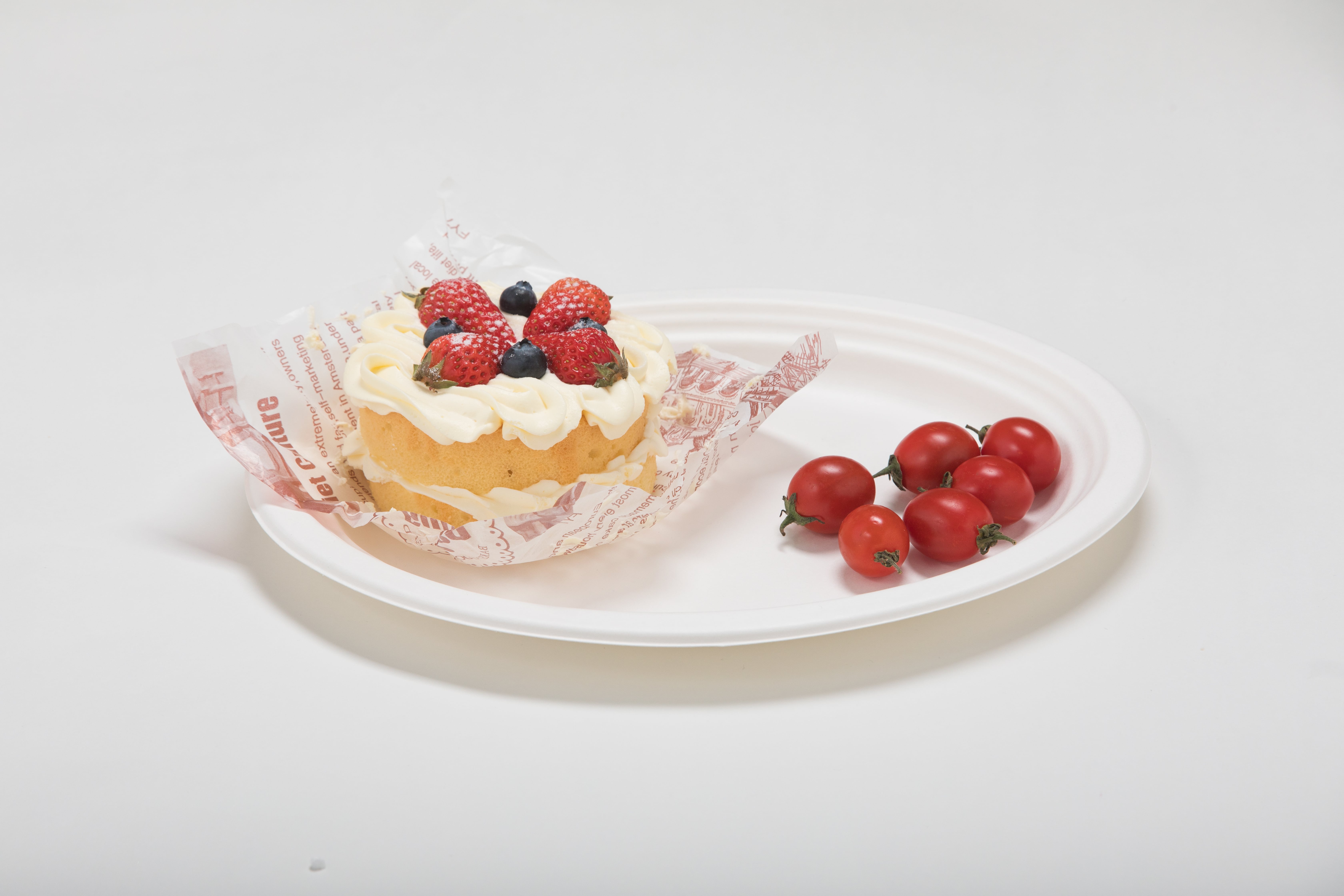
In our fast-paced modern society, where time is of the essence, the demand for convenience has reached unprecedented levels. This has given birth to numerous innovative solutions, one of which is disposable takeaway plates. These convenient culinary companions have become an integral part of our daily lives, facilitating quick and hassle-free meals on the go.
A Convenient Culinary Companion
Disposable takeaway plates are specifically designed for single-use purposes, allowing individuals to enjoy their meals outside their homes without the burden of carrying heavy or fragile crockery. These lightweight and portable plates provide an effortless solution for those who wish to indulge in a meal at a park, during a picnic, or even while commuting.
Sustainability Amidst Convenience
While convenience remains the primary driver behind the popularity of disposable takeaway plates, society's growing concern for sustainability cannot be ignored. As we face mounting environmental challenges due to excessive waste generation, it becomes crucial to explore sustainable alternatives that align with our modern lifestyle choices. Disposable takeaway plates offer a balance between convenience and sustainability.
They allow us to enjoy meals on the go without compromising our commitment to reduce waste and protect our planet's resources. By understanding and embracing eco-friendly materials and manufacturing processes, these plates present an opportunity for consumers to make conscious choices that positively impact our environment.
To truly grasp the significance of disposable takeaway plates in today's society, we must delve deeper into their materials, and types available in the market as well as their advantages over conventional tableware options. So let us embark on this journey exploring the world of disposable takeaway plates!
Overview of Disposable Takeaway Plates
Materials used for manufacturing
Custom cardboard plates come in various materials, each with its own set of features and benefits. One common material is paper-based plates, which are often made from biodegradable or recycled paper pulp.
These plates offer a lightweight and eco-friendly option, as they can be easily composted after use. Another popular material is plastic, which provides durability and resistance to moisture.
Plastic plates are often made from polyethylene or polystyrene, though they have faced criticism due to their non-biodegradable nature and negative environmental impact. Thankfully, the market now offers biodegradable and compostable options as a sustainable alternative.
10 Inch Paper-based plates
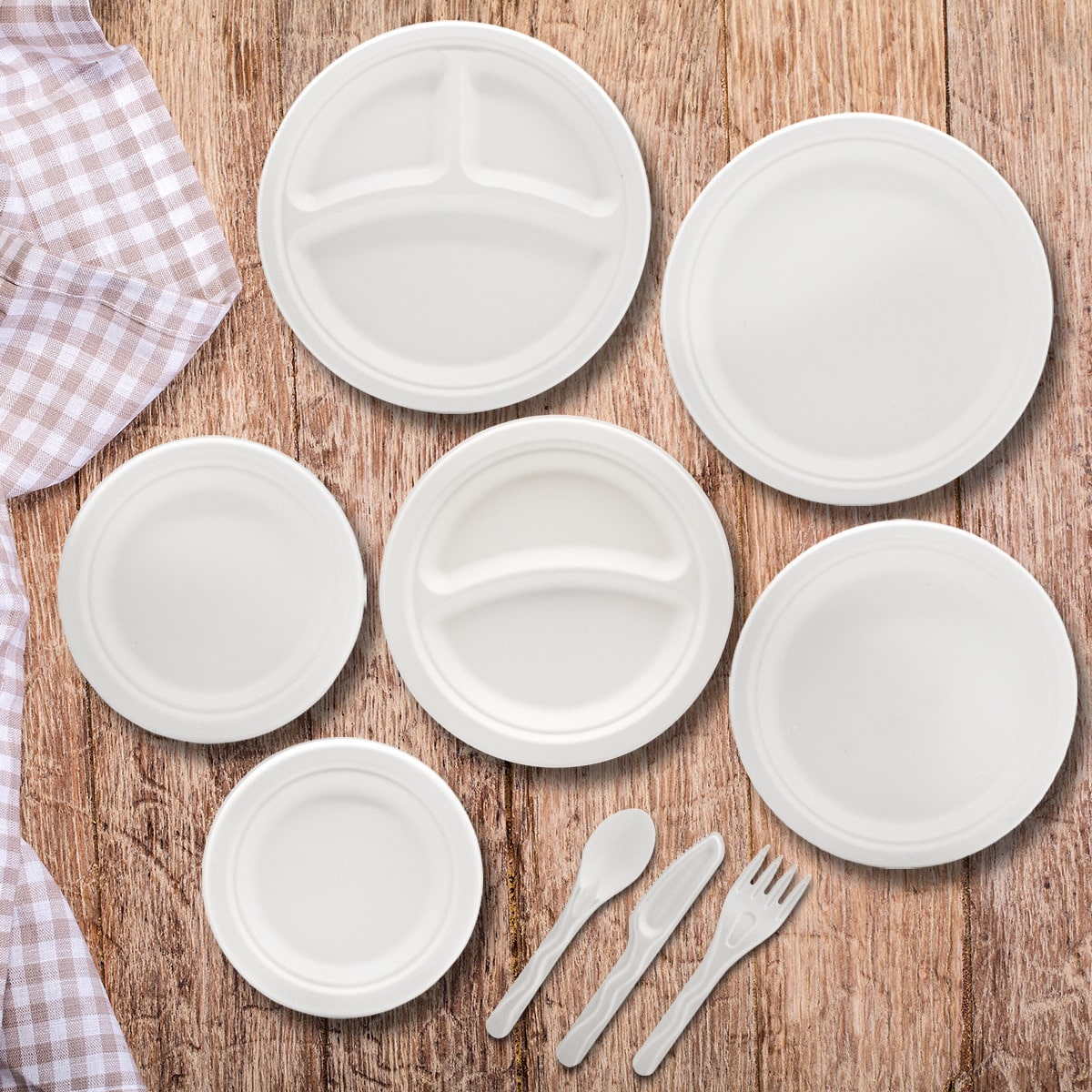
Paper-based disposable takeaway plates are typically made from natural fibers obtained from trees or recycled paper products. The manufacturing process involves turning these fibers into pulp, which is then molded into shape using heat and pressure.
Paper plates provide a lightweight yet sturdy option that can hold a variety of food items without sagging or leaking. They are ideal for casual dining scenarios like picnics or fast-food restaurants where convenience is paramount.
Plastic plates
Plastic disposable takeaway plates have long been favored for their durability and resistance to breakage. Made from polyethylene or polystyrene, these plates offer excellent temperature insulation properties that keep food warm for longer periods.
They also come in various sizes and shapes to cater to different culinary needs. However, it's important to note that plastic plates contribute significantly to environmental pollution due to their non-biodegradable nature.
Biodegradable and compostable options
To address the environmental concerns surrounding plastic disposable takeaway plates, biodegradable and compostable alternatives have emerged in recent years. These options are typically manufactured using renewable resources such as bagasse (sugarcane waste), bamboo, or palm leaf. Biodegradable plates break down naturally over time, reducing the burden on landfills and minimizing pollution.
Compostable plates, on the other hand, can be added to organic waste for industrial composting processes. These eco-friendly options ensure that even when disposed of, the impact on the environment is significantly reduced.
Types of disposable takeaway plates available in the market
Disposable takeaway plates have evolved beyond traditional round designs to cater to various food preferences and dining experiences. One common type is the traditional round plate, which remains a popular choice due to its simplicity and versatility.
However, modern disposable plates also come with divided compartments, allowing consumers to keep different food items separate while enjoying their meal on-the-go. These compartmentalized plates are especially handy for foods like rice with curry or salads with dressing.
Additionally, there are specialized shapes and designs available for specific cuisines or events – from rectangular sushi trays to elegant square-shaped plates for upscale gatherings. These innovative designs enhance not only the visual appeal of the dishes but also elevate the overall dining experience for consumers.
Advantages of Disposable Takeaway Plates
Convenience for both consumers and businesses
Disposable takeaway plates offer unparalleled convenience to both consumers and businesses alike. For consumers, these plates eliminate the need to worry about washing and storing traditional plates, especially in busy lifestyles where time is of the essence. Whether you're enjoying a quick meal at home or grabbing food on the go, disposable plates provide an effortless solution.
Similarly, for businesses in the food industry, such as cafes, restaurants, or catering services, disposable plates streamline operations by saving valuable time and resources. They can easily stack these lightweight plates for convenient storage while ensuring hygienic practices.
No need for washing or storage
The absence of washing and storage requirements is one of the standout advantages of disposable takeaway plates. Traditional reusable dinnerware demands significant effort in terms of cleaning after each use. Not only does this consume valuable time but also requires water resources that have their own environmental implications.
With disposable plates, once used, they can be easily discarded without adding to your household chores or placing additional strain on water usage. This convenience saves individuals from spending precious moments scrubbing dirty dishes and instead allows them to focus on more important tasks or simply enjoy their meal in a hassle-free manner.
Hygiene benefits
Disposable takeaway plates present a range of hygiene benefits compared to reusable alternatives. The single-use nature significantly reduces the risk of contamination as there is no chance for residual food particles or bacteria to linger from previous uses. This becomes particularly crucial when considering public events like picnics or parties where multiple people handle shared utensils and dinnerware items.
Disposable plates provide a fresh start every time they are used, ensuring optimal cleanliness standards are maintained throughout various dining scenarios. Moreover, their disposable nature makes them highly suitable for outdoor events where factors like wind or uneven surfaces can make traditional plates less practical or prone to accidents.
Environmental Impact of Disposable Takeaway Plates
Challenges Posed by Plastic Plates
Plastic plates have become a significant concern due to their non-biodegradable nature, leading to severe pollution issues. Once discarded, plastic plates can take hundreds of years to decompose fully, releasing harmful pollutants into the environment.
This long degradation process contributes to the accumulation of plastic waste in landfills and ecosystems, posing a threat to our natural resources and wildlife. Moreover, when improperly disposed of, plastic plates often find their way into water bodies, causing disastrous consequences for marine life.
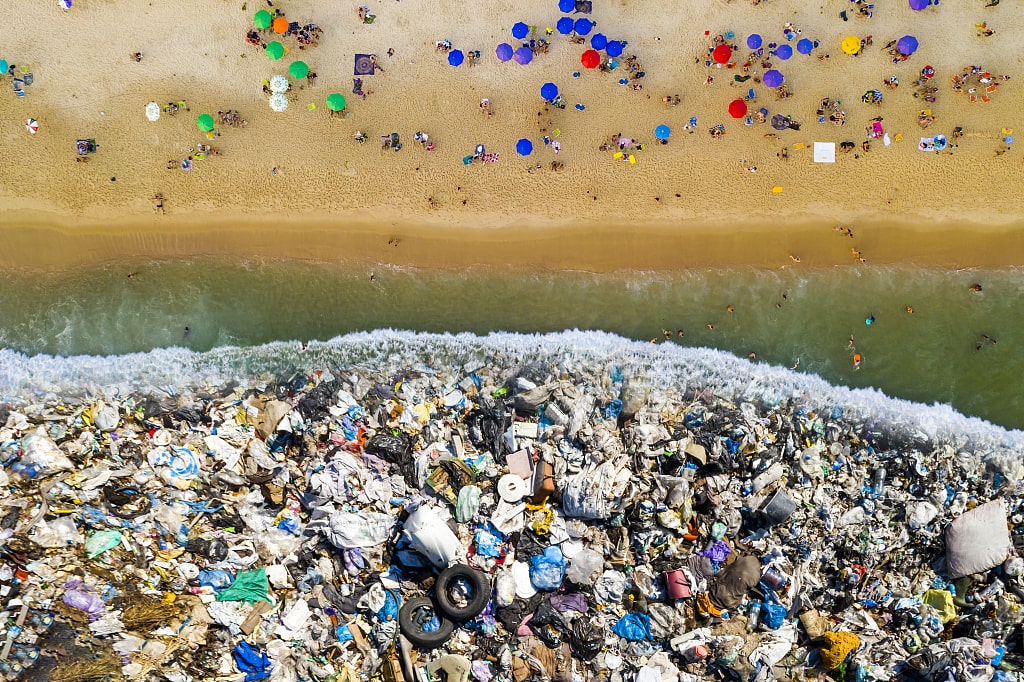
Sustainable Alternatives to Plastic Plates
Amidst growing environmental awareness and concerns about the impact of plastic pollution, sustainable alternatives have emerged as viable options for disposable takeaway plates. Biodegradable materials such as bagasse (a fibrous residue from sugarcane), bamboo, or palm leaf offer promising solutions. These materials are derived from renewable sources and can naturally decompose within a relatively short period without leaving any harmful residues behind.
Additionally, compostable options made from cornstarch or sugarcane pulp not only provide an eco-friendly alternative but also support waste reduction efforts by breaking down into organic matter that enriches the soil. By adopting these sustainable alternatives in place of traditional plastic plates, we can significantly reduce our ecological footprint while still enjoying the convenience that disposable takeaway plates offer.
Innovative Features in Square Plates
Heat Resistance and Insulation Properties: The Sizzle that Endures
Disposable takeaway plates have come a long way in terms of their ability to withstand the heat of piping hot food without compromising their structural integrity. Manufacturers have developed innovative materials and manufacturing techniques that make these plates resistant to high temperatures, ensuring that they remain strong and stable even when holding steaming dishes.
This feature not only enhances the functionality of disposable plates but also allows consumers to enjoy their meals at optimal temperatures without any worries. From sizzling pizzas to savoring hot curries, these plates are designed to handle the heat.
Leak-Proof Designs: A Shield against Spills
One common concern with takeaway meals is the potential for sauces, gravies, or other liquids to leak through the plate. However, modern disposable takeaway plates address this issue with ingenious leak-proof designs.
These plates feature raised edges or specially designed compartments that prevent any liquid from seeping through, keeping your meal intact and mess-free. Whether you're enjoying a saucy stir-fry or indulging in a delectable dessert with creamy toppings, these leak-proof designs ensure a worry-free dining experience.
Microwavable Options: Convenience Redefined
In today's fast-paced world, convenience is paramount. Microwavable disposable takeaway plates have emerged as an answer to this need for quick and efficient meal preparation. These plates are made from materials that can be safely reheated in the microwave without warping or releasing harmful substances into your food.
This convenient feature allows you to easily heat up leftovers or enjoy pre-prepared meals without transferring them onto separate microwave-safe dishes. Say goodbye to unnecessary extra steps and hello to hassle-free reheating!
Conclusion
Innovation has transformed disposable takeaway plates into versatile dining solutions that cater to our modern lifestyle. From their heat resistance and insulation properties to leak-proof designs and microwavable options, these plates have evolved to meet our ever-changing needs. They offer both functionality and convenience without sacrificing sustainability.
By opting for biodegradable or compostable materials, we can reduce the environmental impact of disposable plates while still enjoying their benefits. So, the next time you grab a takeaway meal, remember the ingenuity behind the plate that holds your culinary delight - it's a testament to human innovation and its commitment to making our lives easier while minimizing our ecological footprint.
References


